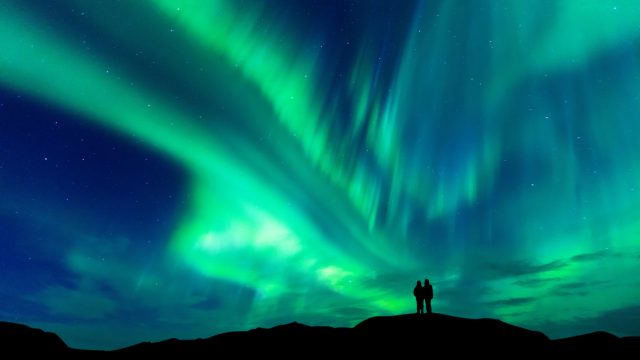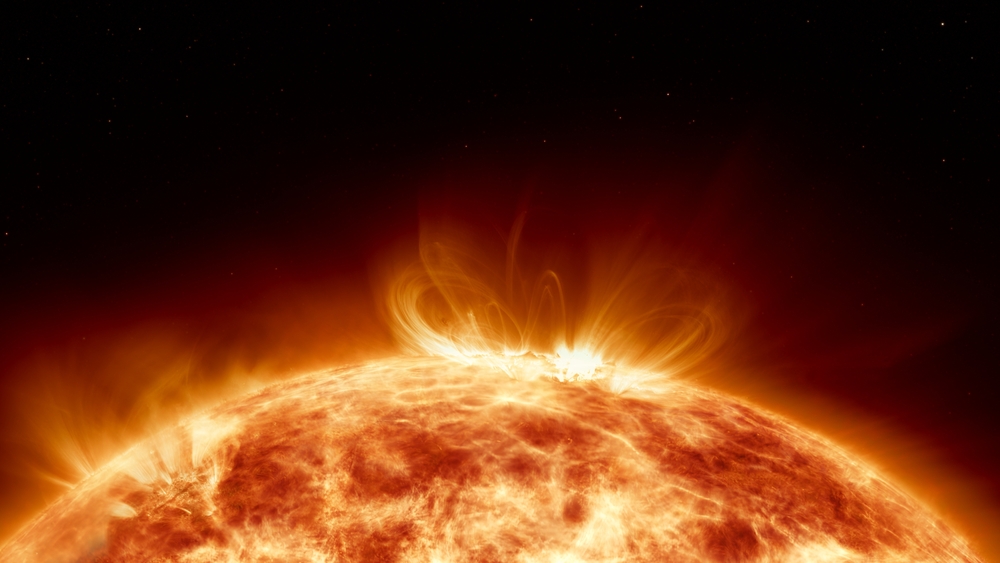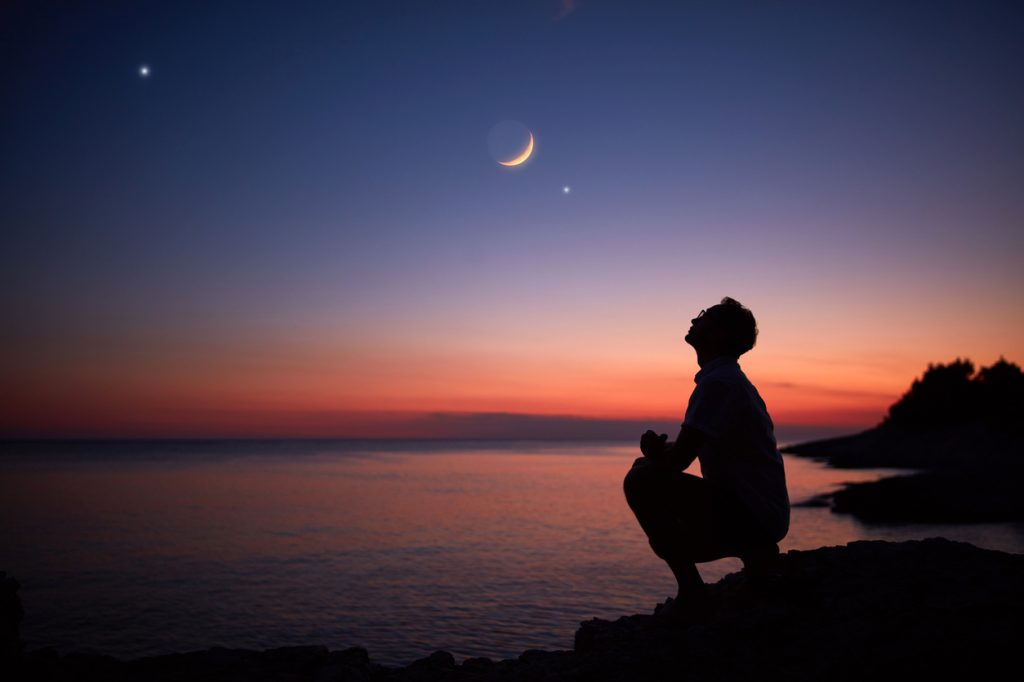Solar Flares Will Create “Fireworks” in the Sky Tonight—Here’s How to See Them

Easily one of the greatest traditions for the Fourth of July is getting outdoors to take in a fireworks show. But just because the holiday is barely behind us doesn’t mean there aren’t more opportunities to take in a dazzling nighttime display. That’s because according to scientists, a pair of solar flares recently went off that will create “fireworks” in the sky tonight. Read on for more information on how to see them for yourself.
READ THIS NEXT: 6 Stargazing Secrets, According to Astronomy Experts.
The sun is becoming more active lately as it approaches “solar maximum.”

Even as we enter the sunniest time of year, our solar system’s star has become much more active over the past few months in ways you might not immediately notice. That’s because the sun is currently approaching “solar maximum,” which describes the peak level of activity it reaches as part of 11-year cycles when the sun flips its magnetic poles, according to NASA.
After the star officially entered Solar Cycle 25 in Dec. 2019, scientists estimated it would become most active sometime in 2025. But scientists now believe the peak could come much sooner as solar flares, sunspots, and coronal mass ejections (CME) have increased well ahead of forecasts, Live Science reported.
Two solar flares will reach Earth and create a dazzling spectacle in the sky tonight.

Fortunately, those of us down here on Earth are well protected from the increased bombardment of radiation and energized particles, thanks to our magnetic field. But there can still be some noticeable effects—including an increase in the brilliant light shows called aurora borealis, also known as the Northern Lights. And thanks to the sun’s recent activity, you might be able to catch a rare glimpse of them tonight.
Around July 4, NASA’s Solar and Heliospheric Observatory (SOHO) announced it had observed two large solar flares (or CMEs) partly directed towards Earth, Space.com reports. The energized particles shot out during these events are expected to start hitting our planet’s atmosphere late in the evening on July 6 and through July 7, likely creating bright aurora displays in northern areas.
In a tweet sent on July 4, Tamitha Skov, PhD, a solar weather physicist, explained that the second CME is traveling slightly faster than the first, creating a “double punch” of energy that’s strong enough to potentially bring the light shows to the “mid-latitudes.”
RELATED: For more up-to-date information, sign up for our daily newsletter.
Forecasts say certain northern areas could see the Northern Lights tonight and tomorrow evening.

While the aurora borealis is a regular occurrence in the Arctic, the latest geomagnetic storms are strong enough to move the light show to areas that may not be accustomed to seeing them.
According to the National Oceanic and Atmospheric Administration (NOAA), the expected G-1 level event can often make the Northern Lights appear in areas like Maine and northern Michigan. But since storms can sometimes be difficult to forecast, strength might reach G-2 or G-3 levels, which could push sightings even further south to New York, Idaho, Illinois, and Oregon, Insider reports.
The event is rare enough that it’s “worth stepping outside around midnight local time during the night from Thursday into Friday if you live at northern latitudes and if the sky is clear,” Daniel Verscharen, PhD, associate professor of space and climate physics at University College London, told Insider.
And even if conditions aren’t perfect in your area, this may not be the last time you’ll be able to catch a glimpse thanks to the approaching “solar maximum” in the coming months.
“Although the Sun is no more active than in previous generations, our society has changed. With our increasing reliance on electric power, global telecommunications, satellite navigation, and aviation, we are more sensitive than ever to the sun’s changing moods,” Mark Miesch, PhD, a scientist at NOAA’s Space Weather Prediction Center, said in a statement. “Stay tuned for more fireworks as we approach yet another solar maximum in 2024.”
Here’s how to get the best views of the aurora tonight.

If you plan to catch a glimpse of the Northern Lights, you’re best off following similar rules to optimal stargazing. This means you should try to get as far away from city lights or other sources of light pollution as possible, according to NOAA. It’s also best to find a vantage point that provides the most expansive view of the night sky.
However, there’s one built-in disadvantage to this unique display. “The big problem at this time of the year is that the night is very short, especially at high latitudes,” Verscharen told Insider. “This means that there is only a very short window of opportunity when it’s really dark enough to see the aurora.”
To get the darkest conditions, NOAA suggests starting your viewing window within two hours of midnight, making 10 p.m. to 2 a.m. optimal.